Exploring the Cultural Impact of Sailor Moon
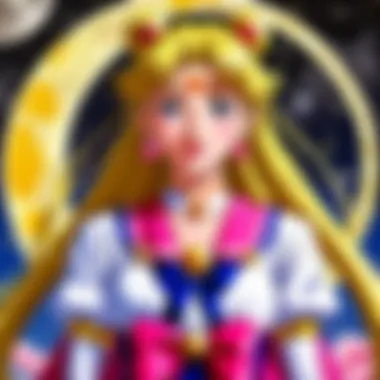
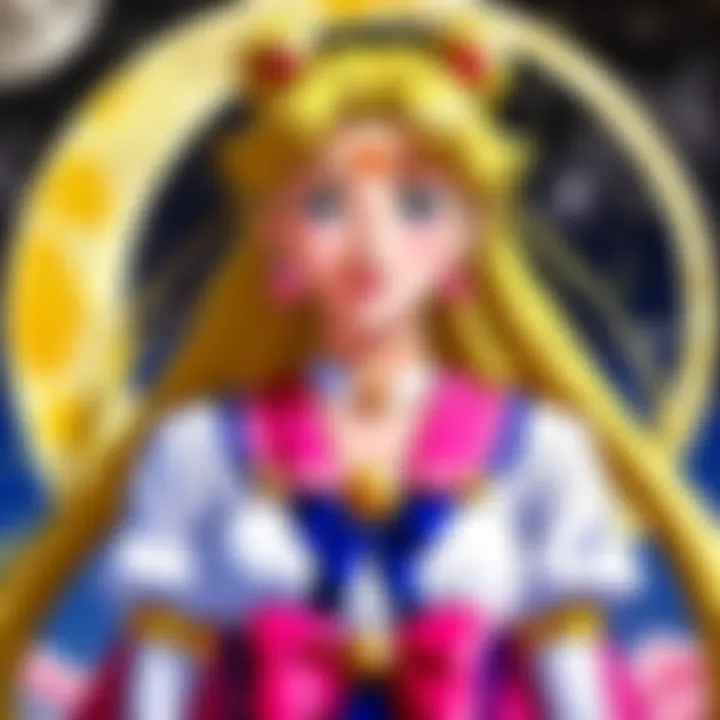
Intro
Sailor Moon, the iconic series that burst onto the scene in the early 1990s, remains a cornerstone in the realm of anime and manga. Its blend of adventure, drama, and fantasy struck a chord with audiences worldwide, and its echoes are still felt today. Rooted deeply in themes of love, friendship, and empowerment, the franchise not only paved the way for the magical girl genre but also inspired countless creators and captivated fans across generations.
In this exploration, we traverse the landscape of Sailor Moon, examining its influences and themes while unpacking the legacy that continues to resonate within the anime community. From the origin stories of its beloved characters to the socio-cultural impacts, we aim to shed light on what makes this series not just special but crucial in understanding the evolution of anime.
We aim at dissecting the components that have kept Sailor Moon relevant, alongside discussing notable adaptations and the industry's broader trends. A realistic look at episode reviews, character spotlights, and comparisons with the manga will help connect the dots, making clear why this celestial story has not faded into the stars.
As we dive deeper, we awaken our fancies for the themes and narratives at play, and ultimately uncover how Sailor Moon has influenced both fans and creators alike.
Episode Reviews
Summary of the episode
Taking a peek at specific episodes is like sifting through treasures in a chest. Each episode unfolds a new layer, with our heroes - Usagi Tsukino and her crew – defending the Earth against forces of evil. For instance, Episode 1 successfully introduces Usagi, endearing her to audiences with her clumsiness and resolve as she transforms into Sailor Moon. This initial installment sets the stage, revealing crucial motifs in love and courage.
Analysis of key events
Key events throughout the series often reflect broader themes of growth and sacrifice. For example, the defeat of the first major antagonist, Queen Beryl, isn't merely about victory; it exemplifies the power of friendship and teamwork, a recurring lesson that resonates with viewers. The emotional stakes rise as characters evolve in the face of adversity, making the narrative poignant.
Discussion on character development
One cannot discuss Sailor Moon without diving into character arcs. Usagi starts as an ordinary girl, but her journey from a timid and somewhat self-doubting student to a confident warrior serves as an inspiration. Similarly, the supporting characters, each with their own battles, have narratives that interweave seamlessly, showcasing individual struggles and collective triumphs.
Highlight memorable moments
Moments like Sailor Moon's first confrontation with a youma evoke nostalgia. The unique music, the iconic transformation sequences, and the camaraderie amongst the Senshi build connective tissue with the audience, inducing cheers for their perseverance. The climax of stories, especially towards the end of the series, often delivers an emotional punch, leaving viewers not just affected but changed.
Character Spotlights
Background information on the character
Focusing on Usagi Tsukino, the titular character, highlights her complexities. Initially introduced as a whiny teenager, her journey reveals a deeper resilience. Drawing upon her struggles in middle school, we see her character evolve through trials, allowing her to grow stronger and more self-assured.
Personality traits and unique quirks
Usagi's character is characterized by her optimism, sometimes bordering on naïveté, and this balance endears her to audiences. Her love for sweets offsets her combat prowess, creating a delightful contrast that paints her as relatable. The little quirks, like her obsession with all things cute, add layers to her character and make her memorable.
Role in the storyline
In the storyline, Usagi serves not just as a fighter but also as a leader. Her intuitive sense of empathy bridges connections among the Senshi, reinforcing one of the important messages of the series: the significance of emotional support and solidarity.
Fan theories and speculations
Fan theories around Usagi's true nature and her potential futures often manifest in online discussions. These theories reflect not only a deep engagement but also an understanding of her substantial role in the overarching narrative—suggesting that her identity is a blend of her human and celestial selves.
Anime vs. Manga Comparison
Plot differences between the anime and manga
The anime often diverges from Naoko Takeuchi's original manga, especially in terms of pacing and character focus. While the manga delves into deeper levels of emotional struggle, the anime emphasizes episodic adventures, allowing for a broader array of scenarios that sometimes leads to a more whimsical narrative.
Art and animation quality
Animation quality in the original run of Sailor Moon reflects the technical constraints of its time. Colors are vibrant and memorable, though not always smooth or polished by modern standards. The manga, however, showcases Takeuchi's detailed artistry, capturing subtle expressions and atmospheres that enrich character identities in ways that some animation can’t.
Character portrayal
Character portrayals shift between mediums; for instance, Sailor Mercury is more focused and logical in the manga, while the anime adds layers of comic relief to her serious demeanor. This shift in portrayal illustrates how adaptations can alter audience perceptions.
Fan preferences and opinions
Eventual fan preferences reveal contrasting loyalties toward the manga or the anime based on what each viewer resonates with. Many tend to appreciate the manga for its more mature themes, while others find joy in the light-hearted narratives of the anime's journey.
"The battle between light and dark resonates beyond the screen, weaving tales that reflect our own struggles."
In the realm of Sailor Moon, it's not just about the fight scenes; it's about the emotional connections formed along the way. From the high-energy battles to quiet moments of introspection, the series has served as a mirror to the lives of its fans, making it not just a show but a cherished part of many individuals' lives.
Prelude to Sailor Moon
The world of anime has been enriched with various narratives, but few hold a candle to the brilliance of Sailor Moon. This vibrant tale, which centers around magical girl heroes, has transcended generations and carved a unique niche in popular culture. Understanding this phenomenon is crucial as it serves not only as entertainment but also as a cultural touchstone that embodies evolving attitudes toward gender, friendship, and heroism.
Sailor Moon isn't just a whimsical story about schoolgirls battling evil; it’s a multi-faceted exploration of personal growth, moral dilemmas, and the bond of friendship. It emphasizes themes that resonate deeply with both its audience, particularly among young females, and society at large.
Historical Context
To appreciate Sailor Moon fully, one must look back at the era that birthed it. Emerging in the early 1990s, this was a time marked by economic booms in Japan and shifts in the societal landscape. The popularity of manga and anime was on the rise, creating fertile ground for new and diverse stories. Manga magazines catered to tons of demographics, paving the way for narratives focused on female protagonists and the mystical.
During this period, the magical girl genre was still in its infancy. While previous series set the stage, none captured the essence of adolescence and empowerment like Sailor Moon. The creators, Naoko Takeuchi and her team, deftly blended themes of empowerment with a vibrant visual style. They took cues from the heroes of shōnen anime yet flipped the narrative, showcasing strength through cooperation, emotion, and relatability.
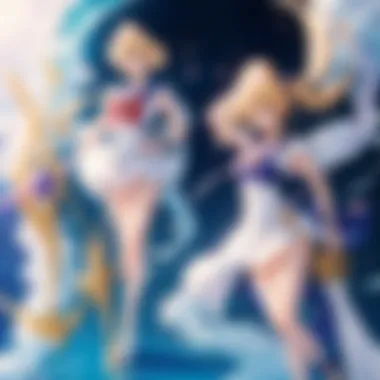
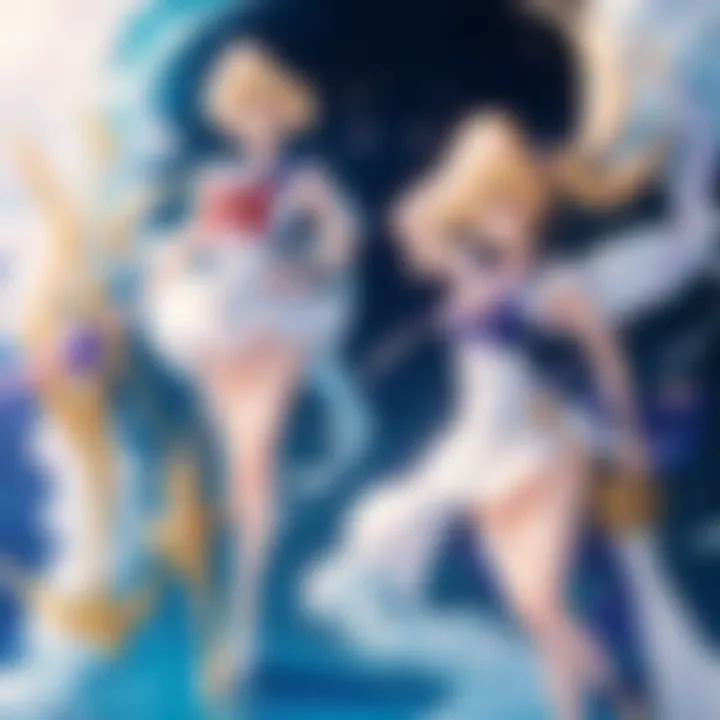
Historical events also influenced the themes in Sailor Moon. Japan was facing societal shifts towards women's rights and feminist ideals during the late 20th century, which colored the storytelling within the series. The characters, especially Usagi Tsukino, symbolize the journey towards female empowerment, seamlessly intertwining the personal with the broader societal context.
The Birth of a Phenomenon
The inception of Sailor Moon was not just the result of a single lightning bolt of inspiration; rather, it was a careful weaving of talent, cultural shifts, and a bit of luck. Launched initially as a manga in 1991, it soon caught the attention of television executives, resulting in an anime adaptation that sent ripples through the industry.
The show quickly captured hearts and minds, much akin to catching fireflies on a warm summer’s night. It became a cultural phenomenon almost overnight. What set Sailor Moon apart was its pioneering approach to storytelling. Usagi Tsukino, the protagonist, was not a typical hero; she was clumsy, emotional, and vulnerable. This relatability allowed viewers—particularly young girls—to see themselves reflected in her struggles and triumphs.
The series introduced characters with diverse backgrounds and unique powers, fostering a sense of unity among the Sailor Guardians. They didn’t fight alone; each member brought distinct strengths, promoting the notion that friendship and collaboration elevate one’s power.
This innovative perspective carved a new path in anime, leading many other creators to emulate its structure and themes. Sailor Moon's legacy shaped an entire genre, giving rise to numerous magical girl series that followed, each echoing elements of Takeuchi's masterwork. Much like an intricate tapestry, the thread of Sailor Moon runs through the fabric of anime history, affecting not only its genre but also society’s understanding of heroism, responsibility, and identity.
The Concept of the Magical Girl
The concept of the magical girl serves as a bedrock for understanding Sailor Moon's vast influence and iconic status. It isn't just about the flashy transformations or the fighting between good and evil. At its heart, the magical girl genre embodies themes of empowerment, innocence, and the challenges of growing up. Sailor Moon took this concept and breathed new life into it, transforming it into a cultural phenomenon that resonates even today.
Defining Characteristics
When one mentions magical girls, several key traits often come to mind. These characters are generally young females who possess extraordinary powers overcome adversities, often alongside their friends. In Sailor Moon, the eponymous heroine Usagi Tsukino is a classic example. She starts off as a clumsy middle school girl, who seems to be a realm away from the savior of the world. Yet, with the guidance of Luna, her talking cat sidekick, she embraces her potential and learns the true meaning of inner strength.
Some defining characteristics of magical girls include:
- Transformative Power: A signature of the genre, transformations serve not only as a means to display power but also symbolize the transition from innocence to maturity.
- Friendship and Teamwork: In Sailor Moon, Usagi does not fight alone. Her fellow Sailor Guardians support not only in combat but also in personal growth.
- Dual Identity: Magic girls often lead double lives, balancing their daily responsibilities with combat against evil. This duality embodies the struggle of adolescence, making these characters relatable to audiences.
Through these traits, Sailor Moon explores how even the most ordinary individuals can spring into extraordinary circumstances with courage and camaraderie. This blend of relatable struggles and the irresistible allure of magic captivates fans across generations.
Evolution of the Genre
The magical girl genre didn’t spring into existence overnight. It evolved through various cultural lenses and societal norms over the decades. Prior to Sailor Moon, many magical girl series, like "Samantha" from Bewitched or Holly Hobbie and Friends, provided simpler character arcs focused on domestic life.
However, as the 1990s rolled around and Sailor Moon burst onto the scene, it began to shift the genre into uncharted waters. Sailor Moon introduced a deeper narrative, emphasizing themes like friendship, self-discovery, and empowerment.
The impact was twofold:
- Complex Character Development: The individual backstories of each Sailor Guardian offer a richer narrative fabric. Unlike earlier iterations, these characters face personal dilemmas that add depth beyond their magical abilities.
- Cultural Parallels: Sailor Moon also mirrored shifts in Japanese society. As gender roles evolved in the 1990s, the series presented girls who were powerful, independent, and multifaceted.
Since Sailor Moon, the magical girl concept has continued to flourish, impacting various media forms. Works like Puella Magi Madoka Magica add a darker twist to the genre, exploring moral complexities and existential questions, proving that the essence of magical girls can morph while still retaining their core appeal.
"Sailor Moon demonstrated that strength comes in many forms, often wrapped in compassion and understanding."
Character Analysis
Understanding the characters in Sailor Moon is essential for grasping the series' depth and appeal. This familiar tale of young heroes is not just about fighting evildoers but a rich tapestry of personal growth, relationships, and intricate character dynamics. An in-depth character analysis sheds light on issues such as identity, loyalty, and the struggles of adolescence, all pivotal in making the series resonate with its audience.
Usagi Tsukino: More than Just a Heroine
Usagi Tsukino, the titular character, serves as the heart of Sailor Moon. Often perceived as simply a clumsy teenage girl, she embodies much more. Her journey from a carefree, irresponsible girl to a brave, responsible leader is one that mirrors the experiences of many teenagers.
Originally portrayed as a typical lazy student who would rather play video games or daydream about romance, Usagi's character develops profoundly throughout the series. Her emotional depth gives viewers a chance to witness her vulnerabilities and insecurities. This relatability fosters a strong connection between Usagi and the audience. Moreover, her compassion for others sets a tone for the series, emphasizing that strength is not just in combat but in kindness and empathy.
Supporting Characters and Their Roles
In the rich world of Sailor Moon, the supporting characters play vital roles that enhance the narrative and deepen the audience's engagement. These characters symbolize various attributes, such as friendship, perseverance, and the multi-faceted nature of human relationships. They are integral to the progression of the storyline and the development of Usagi herself.
Sailor Guardians
The Sailor Guardians represent various celestial bodies and embody distinctive traits that contribute to the fabric of the series. Each guardian has her own personality and backstory, which allows different audience members to see themselves in these heroes.
For instance, Sailor Mercury embodies intelligence and analytical prowess, while Sailor Mars brings a fiery spirit. This blend provides diversity and depth to the character ensemble. Their camaraderie emphasizes the importance of teamwork and loyalty, reinforcing the show's core themes. The Guardians are more than just fighters; they are a family who support one another through trials and triumphs. This makes the article's exploration of them not just beneficial but essential for understanding the emotional core of Sailor Moon.
Antagonists
While the Sailor Guardians shine brightly, the antagonists introduce complexity and narrative tension. The villains in Sailor Moon are often layered characters with their own motives, which makes them much more than just evil figures. Main adversaries like Queen Beryl or Sailor Galaxia are not stereotypical; they possess backstories that reveal their motivations and desires.
This gives depth to the conflict and allows for moral dilemmas throughout the narrative. By examining these antagonists, the article can explore themes like redemption, jealousy, and the blurred lines between good and evil. Their complexity fuels the drama of the series and captivates the viewer’s attention, making their analysis a worthwhile component.
Mentors
Mentors like Luna and Artemis provide essential guidance for Usagi and her friends, creating a crucial support system. They represent wisdom and experience, helping the younger characters navigate challenges both physical and emotional.
These mentor figures illustrate the importance of learning from the past and understanding one's potential. Their presence adds a layer of gravity to the series; they are not simply there for comic relief but serve as reminders of the weight that responsibility carries. Analyzing these characters can shed light on important life lessons about growth, patience, and guidance—key topics that resonate through the entire narrative.
"Character analysis unveils the intricate web of relationships that enrich Sailor Moon, making it a timeless exploration of youth, friendship, and resilience."
Through detailed character analysis, Sailor Moon reveals its deeper messages about identity and belonging. Each character is a facet of the whole, contributing significantly to the narrative's multifaceted essence.
Cultural Themes and Symbolism
In the realm of Sailor Moon, cultural themes and symbolism play a pivotal role, shaping the narrative and enriching its characters. Understanding these elements is vital for both fans and scholars alike, as they offer deeper insights into the series' enduring appeal. This section delves into two primary themes that resonate throughout the storyline: friendship and loyalty, as well as love and sacrifice. Each theme not only serves the plot but also reflects broader societal values that can lead us to profoundly engage with the characters' journeys.
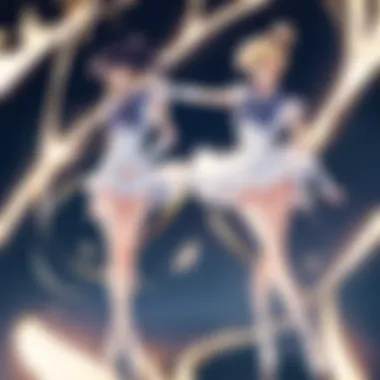

Friendship and Loyalty
Friendship stands at the heart of Sailor Moon, often functioning as both a source of empowerment and a means to combat adversity. The series emphasizes the idea that true strength stems from connections with others. Usagi Tsukino, the protagonist, isn't just a powerful warrior; she becomes a symbol of camaraderie. Her relationships with the Sailor Guardians illustrate a crucial element: it is through their shared experiences, support, and unwavering loyalty that they conquer formidable foes.
The enduring bonds between these characters can be seen as a reflection of a universally relatable sentiment. Much like the realities of life, friendships face challenges. These relationships often evolve through misunderstandings, rivalry, and ultimately, reconciliation.
"We are not just friends; we are family."
The Sailor Guardians' dynamics underscore the importance of loyalty as well. Each character's commitment to one another showcases a form of emotional resilience. Take the example of Rei Hino and Usagi's contrasting personalities. Despite their differences, they support each other through thick and thin. This kind of loyalty—that comes through trials and tribulations—promotes a message that resonates beyond the screen. It encourages viewers to value their friendships, reminding them that true allies stand firm even in tough times.
Love and Sacrifice
Another significant theme that permeates Sailor Moon is the concept of love and sacrifice. This duality echoes throughout Usagi’s experiences as she navigates the complexities of her relationships, especially with Mamoru Chiba. Their love story is not just a typical romance; it weaves in moments of sacrifice that reveal deep truths about commitment and selflessness.
The beauty of love in Sailor Moon is that it transcends mere infatuation; it often demands sacrifices for the greater good. Characters frequently face tough choices, weighing personal desires against their duty to protect others. Usagi, for instance, struggles with her dual identity—in her everyday life as a schoolgirl and her heroic persona. Her conflicts showcase the theme vividly; she learns that love may sometimes require putting others before oneself.
Moreover, these themes are not just romantic; they also extend to friendships and familial bonds, reflecting the multifaceted nature of love. For example, the unwavering support from her friends often requires sacrifices, reminding viewers that love can take many forms.
The Art and Animation Style
The realm of Sailor Moon is striking not just for its narrative but equally for its visual splendor. When one thinks of the series, the dazzling transformation sequences, the ethereal costume designs, and the vibrant color palettes inevitably come to mind. The art style plays a pivotal role in both storytelling and audience engagement, becoming a cornerstone of the franchise’s identity.
Distinctive Visual Elements
At first glance, the visual style of Sailor Moon is anything but ordinary. The character design features exaggerated proportions, most notably the large, expressive eyes that allow for a broad range of emotional expressions. This stylistic choice captivates the viewers, creating an immediate connection with the characters. Simple designs are complemented by intricate backgrounds, which often reflect the serene, magical themes of the story.
- Color Palette: One standout aspect is the use of bright, contrasting colors that breathe life into even the most mundane scenes. Each Sailor Guardian is assigned a unique color scheme that not only differentiates them but also symbolizes their personal traits and powers.
- Transformation Sequences: The transformation scenes remain iconic in anime history, combining fluid animation with striking visual effects to showcase each character’s essence. The transitions serve as both a plot device and a visual showpiece.
This distinctive art style not only defines Sailor Moon but also set the bar for future anime, inspiring countless artists and animators. The visual language used in Sailor Moon emphasized not just aesthetics, but also emotions, allowing the story to resonate on a deeper level.
Choreography of Action Sequences
When one discusses action in anime, many assume that it's all about rapid exchanges of punches or flashy moves. In Sailor Moon, however, action sequences come with an added layer of artistry. Each fight encapsulates a dance-like choreography that elevates the intensity and drama of confrontations.
Key elements of this choreography include:
- Fluid Motion: The animation often employs sweeping gestures and fluid transitions to make each battle feel like a carefully orchestrated performance. The characters move with grace, backflipping and spinning while casting their magic.
- Symbolism in Movement: Every action isn't merely for show; movements often symbolize emotional stakes. For instance, a slow-motion dive can signify a moment of determination, making viewers feel the weight of the fight.
- Interactive Backgrounds: The environments play a vital role too. A character's movement may interact with the background elements—splashes of water, bursts of light, and the reactions of the surroundings amplify the overall impact of each scene.
"Animation is not the art of drawings that move but the art of movements that are drawn." — Norman McLaren
This perspective aligns splendidly with Sailor Moon’s battles—it's not just what's being fought for that matters, but how it’s expressed through the beautiful choreography of action. The series masterfully weaves together visual spectacle and meaningful character moments, ensuring that action sequences are memorable on multiple levels.
In sum, the art and animation style of Sailor Moon has carved a niche that goes beyond mere entertainment. It offers viewers an aesthetically rich experience that enhances the narrative, allowing for an emotional engagement that continues to resonate today.
Soundtrack and Musical Impact
The significance of the soundtrack in Sailor Moon extends well beyond mere backdrop music. It has played a crucial part in shaping the narrative, enhancing emotional experiences, and establishing the overall tone of the series. Each tune serves as a thread in the rich tapestry of story and character development, allowing viewers to connect with the series on a more profound level. The impact of the musical elements cannot be overstated, as they resonate with the audience long after the credits roll.
Theme Songs and Their Cultural Relevance
The theme songs of Sailor Moon have become anthems that represent not just the series itself but also a generation of fans. Songs like "Moonlight Densetsu" are not just catchy; they encapsulate the essence of the story. From the very beginning, the opening theme lures the audience into a world where friendship, love, and battles against evil are paramount. This approach presented a sense of unity among its viewers, who sang along, identifying themselves with Usagi and her fellow Sailor Guardians.
The significance of these songs transcends the screen; they have a unique cultural relevance. For example, events like Anime Expo or Sakura Con often feature cover performances of these iconic themes, bridging fans across different cultures. Moreover, the themes often serve as a form of nostalgia, triggering memories of childhood for many who grew up watching the show.
"In a sea of anime, Sailor Moon shines bright, largely thanks to the power of its music."
The themes have paved the way for various adaptations, remixes, and tributes. Even today, they appear in variety shows, parody videos, and social media memes, showcasing their lasting influence.
Score Composition and Mood Enhancement
The musical score in Sailor Moon enhances the series' emotional currents and provides support to pivotal moments throughout the story. Composed by Naoko Takeuchi, the background scores intricately set the mood for essential scenes, intensifying feelings of tension during battles, joy in moments of camaraderie, or sadness amid loss. This dimension of the soundtrack paints an auditory backdrop that pulls viewers deeper into Usagi's world, helping them experience the highs and lows alongside the characters.
Consider how the score shifts dramatically during climactic battles versus quieter character interactions. For instance, fast-paced orchestral pieces accompany action scenes, creating an adrenaline-fueled sense of urgency. In contrast, softer melodies are used during emotional revelations, allowing viewers to process the events unfolding.
Furthermore, the integration of Japanese cultural instruments adds a layer of authenticity to the entirety of the series. By using shamisen or koto in specific scenes, it weaves in rich traditions that resonate with viewers familiar with Japan's musical history.
The thoughtful combination of theme songs and score compositions within Sailor Moon has helped establish a robust emotional connection with its audience. This harmonious blend contributes significantly to the show's legacy, leaving an indelible mark that still echoes in various forms of media and art today.
Adaptations and Spin-offs
The adaptations and spin-offs serve as a testament to the rich narrative and character depth that Sailor Moon offers. They not only broaden the reach of the original material but also provide various lenses through which to appreciate the world crafted by Naoko Takeuchi. These adaptations have made the series a cultural touchstone, inspiring numerous creators and contributing to the evolution of the magical girl genre.
From Manga to Anime
The genesis of Sailor Moon can be traced back to its manga roots, which began serialization in 1991. The transition from manga to anime was pivotal, marking the expansion of Usagi Tsukino's adventures from page to screen. The anime adaptation debuted in 1992 and it introduced a slew of new viewers to the charming yet complex universe of Sailor Guardians.
The animated series captured the essence of the manga while enhancing it with vibrant colors and dynamic action sequences. The influence of the anime was immense, and it effectively popularized many of the visual and thematic elements established in the manga. For instance, the character designs became iconic, characterized by large, expressive eyes and an array of colorful costumes. This reimagining allowed the show to connect with a broader audience, particularly in regions where anime was just beginning to gain traction.
Moreover, the pacing and episodic structure of the anime allowed for character development that the manga, limited in its format, couldn't always achieve. The incorporation of filler episodes—while often criticized—added more depth to supporting characters and explored nuanced relationships, such as those between the Sailor Guardians. This enriching of background stories cemented the anime’s place in the hearts of fans, both young and old.
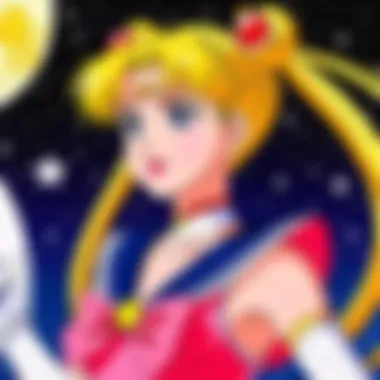
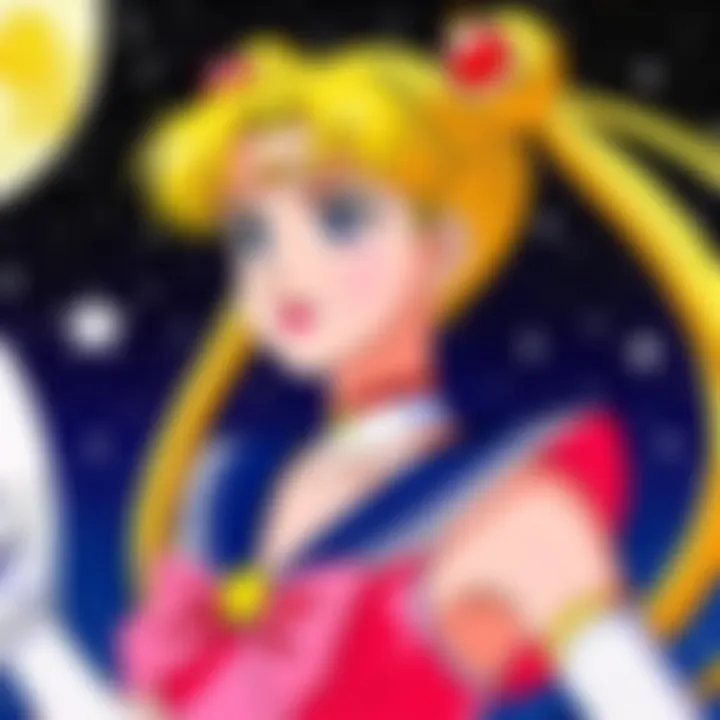
In essence, the anime adaptation transformed Sailor Moon from a beloved manga into a global phenomenon, laying the groundwork for future adaptations and interpretations.
Live-action Adaptations and Their Reception
The franchise didn't stop at animated adaptations; it also ventured into live-action territory, notably with Sailor Moon, also known as Pretty Guardian Sailor Moon, which aired in the early 2000s. This series attempted to bring the magical girl genre into a new light by exploring themes of friendship, bravery, and identity through a more mature lens.
Viewers had mixed feelings about the transition to live-action. While some appreciated the innovative approach and the fresh take on familiar storylines, others felt it lacked the charm that animated versions had delivered. The intricate costumes and special effects were ambitious, but they sometimes fell short of the magical quality fans expected.
- Strengths of the live-action adaptation:
- Critiques of the adaptation:
- Character Depth: Focus on character development.
- Cultural Reflections: Addressed more contemporary social issues.
- Nostalgic Expectations: Fans had difficulty adjusting to the new format.
- Production Limitations: Some felt the quality paled in comparison to the high standards set by the anime.
Despite its mixed reception, the live-action adaptation contributed to the legacy of Sailor Moon, prompting conversations about the flexibility of the narrative. It also set the stage for further adaptations, proving that there is always room for innovation in storytelling, whether through pen and ink, animation, or live-action performances.
"The real magic of Sailor Moon lies not just in its enchanting battles but in its ability to evolve and resonate through various forms of media."
Global Influence and Reception
The topic of global influence and reception plays a significant role in understanding how Sailor Moon transcended its Japanese origins to become a worldwide sensation. The series not merely captured audiences through its engaging plot and vibrant characters; it also planted seeds of the magical girl genre that spread far and wide, often influencing local interpretations and adaptations. The discussion here revolves around the various aspects of its influence, including audience dynamics, cultural exchanges, and how the series shaped perceptions of gender and empowerment in various societies.
International Audience and Fandom
Known as pretty soldier or Bishoujo Senshi, Sailor Moon has garnered a massive and devoted international fanbase. From Latin America to North America, Europe to Asia, the show resonated due to its themes of friendship, love, and transformation, appealing to viewers from diverse backgrounds. The character of Usagi Tsukino, with her relatable struggles and evolving heroism, became a symbol of empowerment. But why did this Japanese show hit home so well abroad?
- The availability of dubbed versions and subtitles helped break language barriers.
- The portrayal of complex female friendships showcased something that audiences had been craving.
- Fandom communities sprang up, fostering a sense of belonging that often carried over into cosplay, fan art, and fan fiction.
These dynamics underscore a reality: Sailor Moon was not simply a show, but a catalyst for conversations around femininity and strength. The series' international success sparked conventions and gatherings where fans could share their love for the characters, thus forging friendships that transcended borders.
"The ability of Sailor Moon to connect with individuals on a personal level contributed tremendously to its global appeal."
Impact on Western Media
In analyzing the impact of Sailor Moon on Western media, it's essential to look at how this anime not only influenced contemporaneous shows but also established a foundation for future productions in the magical girl genre. Sailor Moon was a pioneer, laying the groundwork for shows like W.I.T.C.H. and Winx Club, which adopted similar themes and aesthetics.
Several factors contributed to this impact:
- Character Archetypes: The ensemble cast of distinct personalities allowed for broader representation, encouraging shows in the West to embrace complex backgrounds for their characters.
- Story Arcs: The blend of episodic adventures with overarching storylines influenced narrative structures in Western animation, inviting a more interconnected experience for viewers.
- Cultural Significance: Western productions began to explore gender issues and representations in a manner that mirrored the inclusive themes presented in Sailor Moon.
By paving the way for a deeper narrative foundation within the genre, Sailor Moon reshaped not only the perceptions of magical girls but also influenced and transformed broader media, making lasting contributions that are still evident in today's productions.
In sum, the Sailor Moon phenomenon highlights a significant cultural exchange that not only enriched the anime community but also left an indelible mark on global media narratives. Whether through audience engagement or transformative adaptations, the legacy of Sailor Moon continues to glow brightly across generations.
Critical Reception and Reviews
The critical reception and reviews of Sailor Moon play a significant role in understanding its enduring impact on both fans and critics alike. This topic is essential in dissecting how the series was perceived over time, influencing not only its legacy but also the magical girl genre. These reviews provide insight into how the series resonated with its audience, shaped cultural attitudes, and inspired numerous adaptations. Grasping these reactions allows readers to appreciate the nuances and complexities behind Sailor Moon's success.
Contemporary Critiques
When Sailor Moon first graced television screens in the early 1990s, critics were quick to vocalize their thoughts. While some praised its refreshing take on the magical girl genre, others were more skeptical. Notably, the series was applauded for breaking gender stereotypes. "Here was a show where girls were not just princesses to be saved, but warriors steel-worthy and clever. They could fight for themselves," one noteable anime critic remarked.
- Among the core critiques were issues surrounding character development and pacing. Some critiques targeted Usagi's perceived childish nature, finding her inability to grow up a tad frustrating after repeated episodes. Yet, this very aspect became a topic of re-evaluation. Critics also highlighted how the show tackled heavy themes like friendship and sacrifice in a way that resonated with younger audiences.
- The animation style garnered mixed responses, particularly against the backdrop of the booming anime scene in the 90s. While some lauded its vibrant colors and fluid animation sequences, others claimed the character designs were somewhat generic.
- Another key point of contemporary analysis revolved around the repetitive nature of plots in many episodes. Effectively, while Sailor Moon's episodic nature built a comfortable familiarity, it also opened doors to critiques of predictability.
Ultimately, contemporary critiques varied widely, with some hailing Sailor Moon as a groundbreaking series while others found it lacking depth. Nonetheless, these reflections laid the groundwork for future conversations about its place in anime lore.
Long-term Legacy and Reevaluation
As the years passed, Sailor Moon experienced a revival in critical interest. Scholars have begun to reevaluate the work with a broader context, acknowledging its significance beyond mere entertainment. "It wasn't just a show for children, but rather a cultural commentary on the girlhood experience," stated one prominent gender studies lecturer.
With the growth of internet fandoms and communities, especially on platforms such as Reddit, the dialogue surrounding Sailor Moon has flourished. Fans have engaged in deeper analyses of character arcs, LGBTQ+ representation, and feminist themes.
- Influence on Subsequent Works: Many series look to Sailor Moon as a benchmark for how to portray strong female characters. Notable titles such as Cardcaptor Sakura and Madoka Magica have drawn direct inspiration from its narrative arcs and thematic elements.
- Cultural Impact: The series' ability to transcend generations is a testament to its relevance. Many adults who grew up watching Sailor Moon now share it with their children, creating a cyclical legacy that is both heartwarming and expansive.
- Scholarship Growth: Increased academic interest in the magical girl genre has flourished, with many research papers dedicated to analyzing Sailor Moon’s thematic depth.
While Sailor Moon may have faced criticism during its original airing, the re-evaluative lens of history has shed light on its multifaceted contributions to both anime and broader societal narratives. Over time, it has shifted from being viewed as merely a children's show to being celebrated as a cultural phenomenon that challenges norms and shapes identities.
Closure
In reflecting on the significance of Sailor Moon's legacy, we can glean important insights into how this series has shaped not only the magical girl genre but also wider anime and pop culture landscapes. Sailor Moon, since its inception, has transcended mere entertainment; it has been a beacon of empowerment, friendship, and moral lessons woven discreetly but effectively into its narratives. The themes of camaraderie, resilience, and self-discovery resonate with audiences of all ages, making it an enduring touchstone for fans.
Reflecting on Sailor Moon's Legacy
Sailor Moon's impact can hardly be overstated. It served as a catalyst for change within anime, creating a space for strong, complex female characters who, unlike many of their predecessors, weren’t just side characters or mere love interests. The series introduced protagonists who showcased their vulnerabilities, thus becoming relatable heroes.
- Cultural Shift: The emergence of Sailor Moon in the early 90s marked a shift in societal perceptions regarding women in media. Characters like Usagi Tsukino weren’t just fighting monsters; they were battling internal demons as well. This duality presented complex portrayals of femininity, advocating strength alongside gentleness.
"Sailor Moon has not only captured hearts but also minds, questioning the roles and capabilities of young women in society."
- A Global Phenomenon: Initially targeted to a Japanese audience, the series quickly gained international acclaim, prompting a myriad of adaptations and translations. The narrative’s ability to bridge cultural divides underscores its universal themes.
- Legacy in Fandom: The series cultivated a passionate community that extends well beyond the screen. Fans have dedicated convention spaces, fan art, and even cosplay to honor beloved characters. This sense of community and shared passion showcases how Sailor Moon has become intertwined with personal identities across generations.
Future of the Magical Girl Genre
Looking toward the horizon, the magical girl genre, heavily influenced by Sailor Moon, faces both challenges and opportunities. As society evolves, so too does the landscape of animated storytelling. Newer series continue to emerge that draw from the foundation laid by Sailor Moon, but they often infuse modern sensibilities that cater to contemporary viewers.
- Evolving Narratives: Future installments in the genre will likely address themes such as queer representation and intersectional feminism, following the trail blazed by Sailor Moon but expanding its inclusivity.
- Innovative Storytelling: The genre may evolve into interactive formats through video games or augmented reality experiences, allowing audiences to engage deeply with themes of bravery and camaraderie.
- Legacy Reinforcement: As long as new stories continue to emerge, Sailor Moon's influence will persist. It will serve as both a model and a standard for what the magical girl genre can aspire to become.







